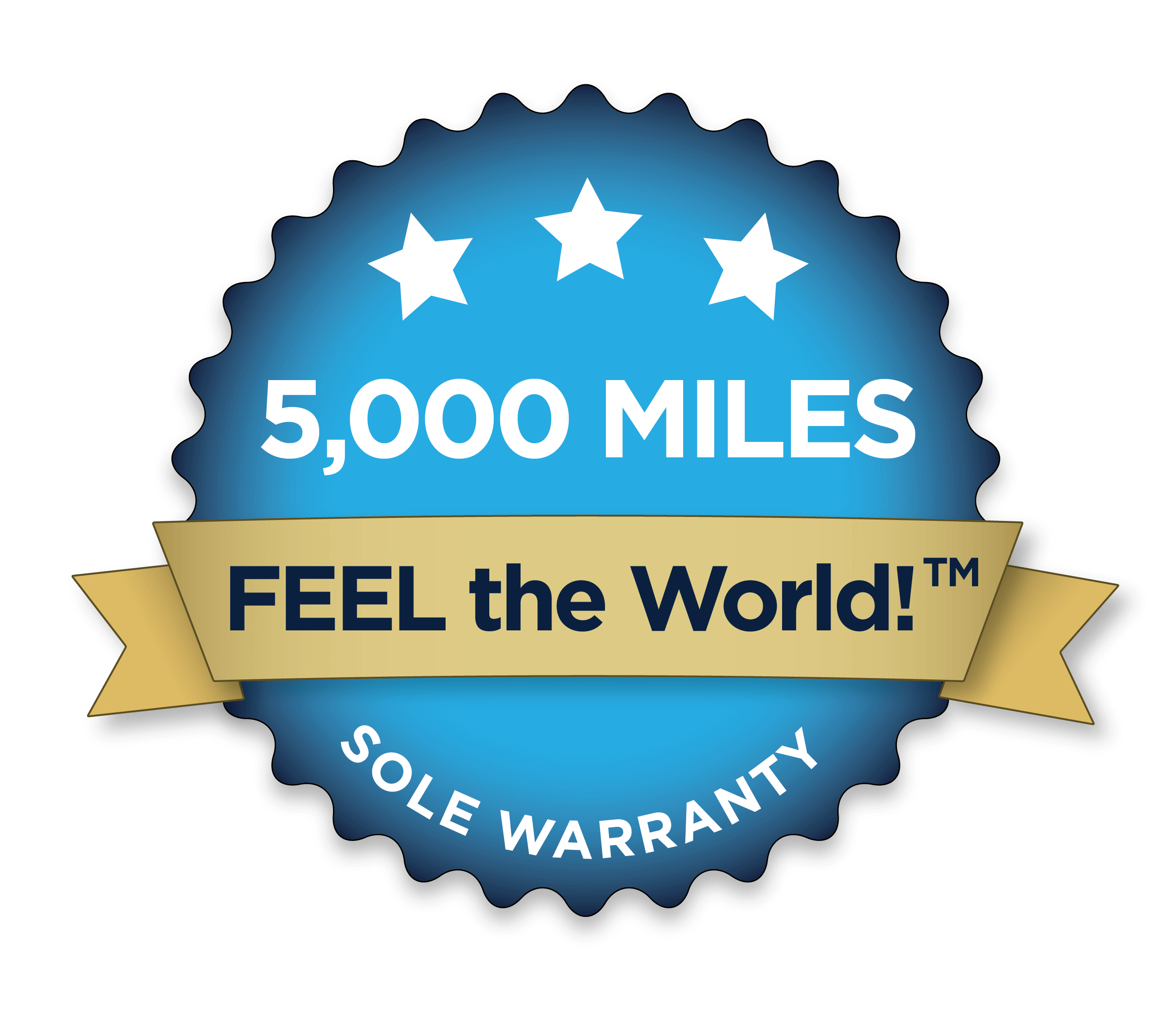Experienced barefoot runners find running barefoot light, easy, and fun.
If you’re not experiencing the same thing, or if you have various issues like blisters or soreness… you’re doing something different than the people who aren’t having those problems. If you wonder, “What might they be doing differently? What could I change to make this light, easy, and fun?” then you’ll probably figure out the answer (probably without knowing exactly what you figured out!) and find yourself running in the same way.
There are tips and ideas we can give you to help in that process, and that’s the point of this series.
In this post, I want to talk specifically about barefoot running sandals.
Barefoot running sandals, often called huaraches — the term that the Tarahumara use for the sandals they wear — can give you feedback that you don’t get from running barefoot.
In other words, just having a little bit of rubber under your foot can give you additional information about your running that, when you attend to it, will improve your running… again, making it faster, easier, lighter and more fun.
What’s the specific information I’m referring to?
SOUND.
When rubber meets the road — literally in this case — you hear something different than when skin meets the road.
So, here’s something you should know:
When you run in huaraches, you CAN run quietly… Sometimes even silently.
That is, A SLAPPING NOISE IS NOT A FEATURE. It’s a pointer to something going on with your form that, once you address, will not only make the sound go away, but should improve your form.
Sound is a cue. If you’re not running quietly, the question is: “Knowing that others run in sandals without making slapping noises, what could I do differently to get the same effect?”
Slappy story #1
To help you find an answer, let me share a story I got from one Xero Shoes customer, Ron, who was hearing a slapping noise when he walked or ran.
I give him my usual suggestions (which you’ll see below), and he called me back a day later.
“I noticed something interesting,” Ron said, excited about his discovery. “When I ran up a hill (even a slight one), the noise went away! I’m doing something different with my feet when I go uphill.”
“PERFECT!” I responded. “So, the next time you go out for a run, wonder what might be different about your gait when you’re going uphill, and see if you can get that same thing to happen on a flat.”
Ron called back the next day even more excited.
“I figured it out! I can run quietly now!”
I asked what he discovered and, happily, it was everything I recommend to people in this situation:
- When he went uphill, he put his foot UNDER his body more, rather than reaching out with his foot at all
- Went he went uphill, he placed his foot on the ground so that it “met the ground”, rather than dropping it onto the ground
- When he placed his foot, he landed with more of a midfoot strike, almost flat-footed.
- He didn’t try to land on his foot, but to have his foot moving when it contacted the ground.
- His “spring” was softer — that is, he flexed his ankle, knee and hip more when he was going uphill, instead of landing with a rigid spring.
Here’s the fun part: After noticing these things, Ron didn’t consciously do anything different when he got onto flat surfaces… but the sound had gone away. His body/mind figured out the solution for him.
A second slappy story
Now, some people need to be a bit more deliberate, and experiment with different ways of moving, but often just wondering and noticing is enough to create change.
Here’s another story that highlights the same thing:
Jason (definitely not his real name) came to the office to get a pair of Custom-Made Xero Shoes. He told me that he’d been running barefoot for 15-20 miles/week for the last 5 years.
“Every now and then, though,” he confessed, “I get some pain in the top of my foot or in the bones near my forefoot.”
“Oh,” I said, somewhat offhandedly as I made his shoes, “You overstride.”
“No, I’ve been doing this for a long time. I have good form.”
“I hear you,” I replied, “but I’m willing to bet you overstride, that with the idea you should land on your forefoot, you’re reaching out with your foot. In fact, I’m willing to bet that as soon as you put these sandals on, you’ll discover the same thing.”
“How’s that?” he asked.
“You’ll hear a slapping noise when your foot hits the ground.”
Sure enough, he put on his shoes and we went for a run and with every one of his steps, you heard “Slap Slap Slap Slap.”
He was shocked, but I wasn’t. It’s not uncommon that barefoot runners have some form problems that they don’t notice… just like any runner. In this case the sandals pointed out the problem.
“Hey!” Jason said, looking at me as we ran together, “You’re not making any noise.”
We stopped and I gave him the cues that I’m about to tell you. Within 5 minutes, his running was totally quiet. But there was another benefit.
Looking almost confused, Jason said, “This feels totally different than what I’ve been doing for the last five years!”
“How so?”
“Easier, lighter, stronger… like I could keep going forever!”
BINGO!
Me, me, me, me, me
I know that the stories above suggest that all slapping noises are caused by form. And, frankly, that’s true 99% of the time.
The other 1% is if your sandals are tied WAY too loosely.
When you tie Xero Shoes, they should be comfortable. Definitely not tight.
And while it’s true that if they’re way too loose, that could increase the chance of making slapping noises, if you walk or run with really good form, even having your sandals practically falling off your feet won’t cause noise.
But, if your form isn’t perfect yet, then you may want to try tightening the lace a bit (again, if they feel too tight when you do that, you’ve gone too far).
So, assuming too-looseness isn’t the issue…
De-slapping
So, here are the recommendations for “de-slapping” your running:
- Simply wonder, “What could people who run quietly be doing that I’m not?” and then experiment with your gait
- Feet under you — Rather than overstriding, don’t reach out with your foot. Place your foot closer to “under” your body. Exaggerate this for a while if you want to, as if you could place your foot behind you when you land
- Be soft — think of your lower body as a spring… from the foot, through the ankle, through the knee, into the hip.
- Catch the ground — rather than “landing” on your foot, imagine that the ground is a treadmill, and you have to “catch” the moving ground under you with a moving foot. So your foot contacts the ground as it’s already moving
- Try new foot placements — some people land on the ball of their feet. Others land midfoot. Some land flat-footed. Experiment and see which feels right for you. Notice, by the way, that how you land may change depending on whether you’re going up or down hill, accelerating or decelerating.
- Run uphill — feeling the difference as you run uphill may, like Ron, help you discover how to run quietly
Here’s my favorite tip, though:
- MAKE NOISE! — one way to stop making noise is to deliberately make noise so you understand where the noise comes from. You want to prove to yourself that overstriding causes slapping? Simply run fast and then try to stop quickly — to stop quickly you have to overstride. I bet you hear slapping noises. Want to prove that a “tight spring” could make noise? Pretend you have no knees for a few strides and see what happens when you land almost straight-legged. Get the idea?
Let me know what you discover in the comments below.











 Fostering honest and responsive relationships between businesses and consumers.
Fostering honest and responsive relationships between businesses and consumers.










